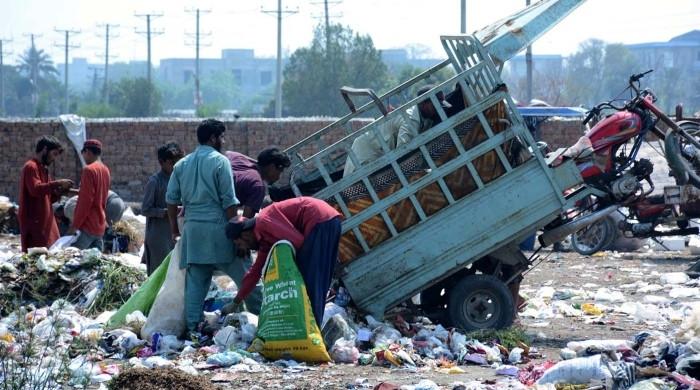In our previous reflection on the faulty governance architecture in Pakistan, we have diagnosed how the absence of local functional governments has eroded democratic responsibility.
But to fully understand why local governance has collapsed, we must deepen a more systemic failure – of budgetary and economic decentralization within the provinces.
A large part of our national discourse remains concerned about shooting federal-professional rope during the prize of the National Finance Commission (NFC). However, a more urgent and under-explored question lies inside: how do the provinces govern themselves, and why did they not allow to empower the districts of all and the Tehsils intended to provide basic services to citizens?
The 18th amendment promised to bring the government closer to the people. He decentralized many subjects of the federal level at the provincial level, but the devolution stopped there.
Instead of empowering districts and tehsils, the provinces have consolidated power in their own capitals. Consequently, provincial bureaucracies and legislators control development budgets, while local governments remain stripped of authority and resources.
The tragedy is that, although Pakistan continues to debate article 160 and the NFC price, its provinces have failed to effectively operationalize their own provincial financing commissions (PFC). Without mechanisms of budgetary transfer to local governments, governance remains unbalanced and undemocratic.
Punjab held a provisional PFC price in December 2016, based on a formula that included the population, poverty, education and access to drinking water. However, it has not been updated since then, despite the 2023 census and persistent development disparities in its regions.
In the Sindh, the latest PFC prize took place in 2007, over 16 years ago, making the entire intra-provincial landscape Distribution of arbitrary and non-transparent resources.
Khyber Pakhtunkhwa announced its latest PFC prize in 2020, which was implemented in part. And the latest PFC Prize for Balutchistan was awarded in 2007, with negligible budgetary decentralization to local councils since then.
The inability to update these PFCs means that provincial governments continue to distribute resources through ad hoc decisions, political patronage or “development regimes” centrally linked to legislators, rather than any allowance based on the formula and sensitive to needs.
The local ministries of all the provinces now operate as shadows of what they have promised. In Punjab, the local government and the Community Development Department (LG and CDD) has undergone several structural changes, but without the elected local councils in place until recently, most of the powers have remained with the administrators.
In all areas, elected local governments still have no budgetary autonomy, because budgetary allowances, hiring and development programs remain controlled by the provincial authorities.
In the Sindh, the Sindh local government department exists mainly to execute centralized controlled regimes in urban areas, in particular Karachi. His municipal companies are underfunded, unable to increase income independently and strongly politicized.
The Department of Local Government of KP is perhaps the closest to the introduction of a structural reform, in particular with the implementation of the 2013 law on the local government and its other modifications in 2019 and 2021, but it also suffers from irregular elections, limited fund transfers and overlapping with provincial departments.
In Balutchistan, the structure of the local government is the weakest. With a limited revenue generation capacity and practically no block transfer from the province, representatives elected to the local level have trouble fulfilling even basic municipal functions.
Sources of income for local governments remain seriously limited in all areas. The main sources of property tax, license costs, local tolls and market costs are preserved by the provincial or poorly administered government. Land tax, a potentially robust source of urban funding, is still collected by provincial services in Punjab and Sindh.
In KP and Balutchistan, capacity gaps mean that their real collection is minimal, even when certain taxes are nominally assigned to local organisms. Local councils are left in pursuit of special subsidies or favors without affections of significant income or foreseeable budget transfers.
The result is a hollow governance system. Local governments should meet the needs for providing services, such as solid waste management, drinking water and local infrastructure, without tools or funds to do so.
The mayors or elected presidents become figures, constrained by provincial finance, publications and planning. Bureaucratic administrators have parachuted during periods without local elections alienating the citizens of governance more.
These shortcomings are not only administrative but deeply political. In all provinces, legislators perceive local governments empowered as a threat to their development control. When the tax and administrative authority flows to the local representatives, it disrupts the dominant model of the patronage policy.
This explains why the PFCs are either delayed or made amazed, why the elections are systematically postponed and why the provincial departments retain control of the municipal level decisions.
To reverse this slide, a set of reforms is urgent. The provinces must activate their PFCs and update their formulas in the light of the last census, mapping and poverty development needs. PFCs should not be symbolic committees; They must have an independent technical contribution, parliamentary surveillance and public transparency.
At the same time, local governments should receive their share of income instruments, such as property tax, user fees and local commercial taxes, with capacity building support to manage them effectively. Budget creation, development planning and services must be decentralized in practice, not only in principle.
The federal government can also push this process by connecting future NFC prices to performance indicators on intra-public equity, transparency and empowerment of the local government. If the provinces want a larger share of the national pie, they must show how they distribute their share fairly.
Local governance is not a secondary problem; It is the first point of contact between the citizen and the state. When a pile of waste is not lifted, a bursting of the flotation line or a school remains closed, the local state is missing. And when the local state is absent, the legitimacy of the entire system erodes.
Democracy does not only concern elections. These are institutions that serve people in their daily lives. To save the governance of the edge, Pakistan must decentralize politically, fiscally and economically. The answers do not reside in Islamabad, or even in Lahore, Karachi, Quetta or Peshawar. They are in the counseling rooms of tehsils and cities – if we choose to empower them.
The writer is associated with the Sustainable Development Policy Institute (SDPI), Islamabad. The article does not necessarily represent the organizational views of the organization.
Warning: The points of view expressed in this play are the own writers and do not necessarily reflect the editorial policy of PK Press Club.TV.
Originally published in the news




